BMW has always played it big when it comes to the global art scene. Particularly in India as it has been an exclusive sponsor of the India Art Fair for more than 5 years. This has brought some very interesting BMW art cars to the floor for Indian art and car enthusiasts. We have compiled a list of cars for you to admire and enjoy.
Jeff Koons, BMW M3 GT2
The Artist–
Jeff Koons is widely regarded as one of the most important, influential, popular, and controversial artists of the postwar era. Throughout his career, he has pioneered new approaches to the readymade, tested the boundaries between advanced art and mass culture, challenged the limits of industrial fabrication, and transformed the relationship of artists to the cult of celebrity and the global market.
The Art-
This BMW M3 GT2 was aesthetically reworked by the US artist Jeff Koons. The striking colors of Koons’ Art Car exude a boisterous sense of power, motion, and energy. As with Warhol’s M1, Koons’ BMW also participated in the legendary Le Mans 24-hour race. It appears as if it is navigating through the realms of space and time.
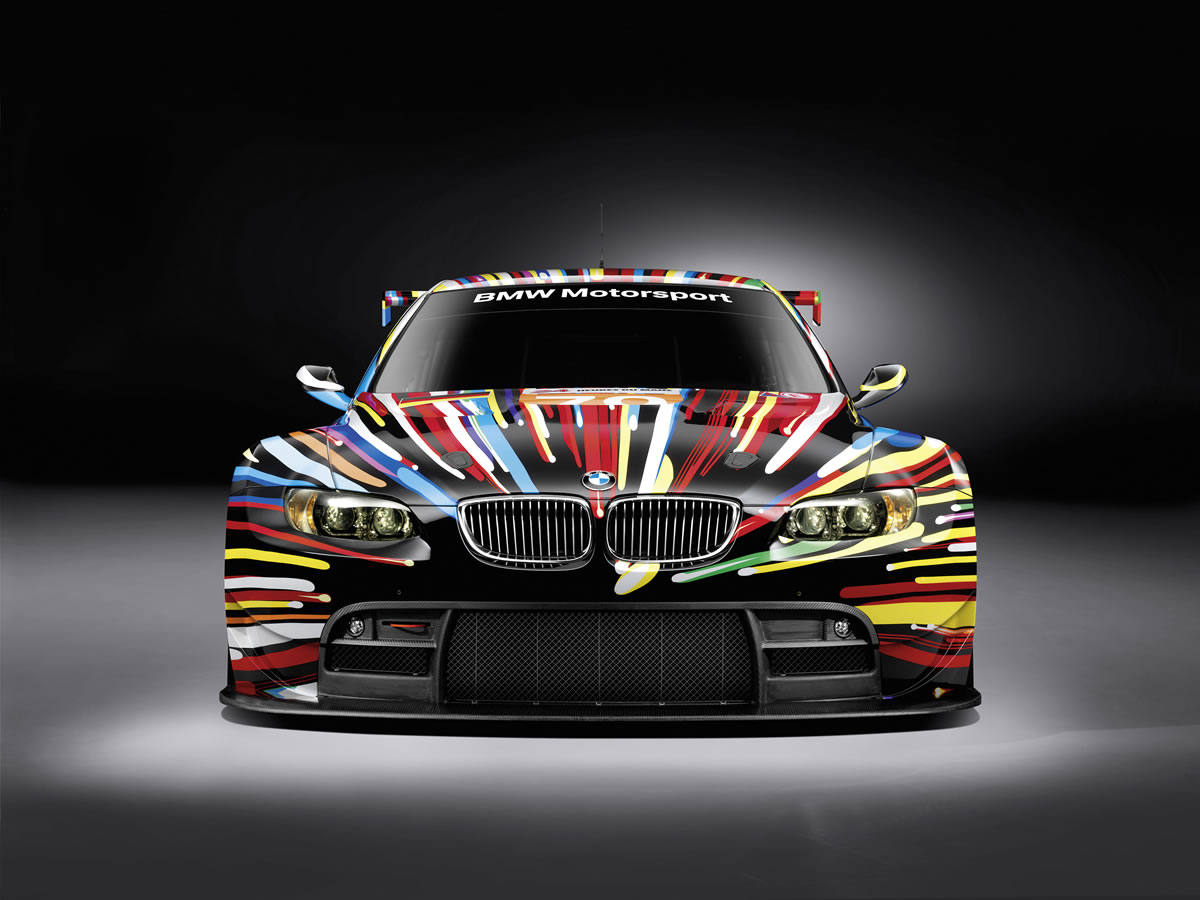
SPECS
- Power- 570bhp at 8750rpm
- Engine- 4.0L Dry Sump V8
- Torque- 500Nm at 5500rpm
- Top Speed- 300Km/h
Roy Lichtenstein, 320i Group 5
The Artist
Born in New York in 1923, Roy Lichtenstein is generally regarded as the father of American pop art. In the years prior to 1938, he painted portraits of jazz musicians. After this, he attended courses held by the “Art Student League,” and then went on to study art in Ohio.
His subsequent work straddled cubism and expressionism. In the late 1950s, Lichtenstein began dealing with trivial culture such as comics and advertisements. His first pop art pictures appeared in 1961.
The Art–
His BMW Art Car is clearly influenced by it: the long-drawn colored strips act as “speedlines” – a feature used in comics to suggest speed. Even the oversized dots used by Lichtenstein, the “Benday Dots,” are reminiscent of his famous comic book pictures. Oversized bumpers and Flared wheel arches made for an exceptional canvas. With the careful use of yellow and green colors, it was a stunning piece of art.
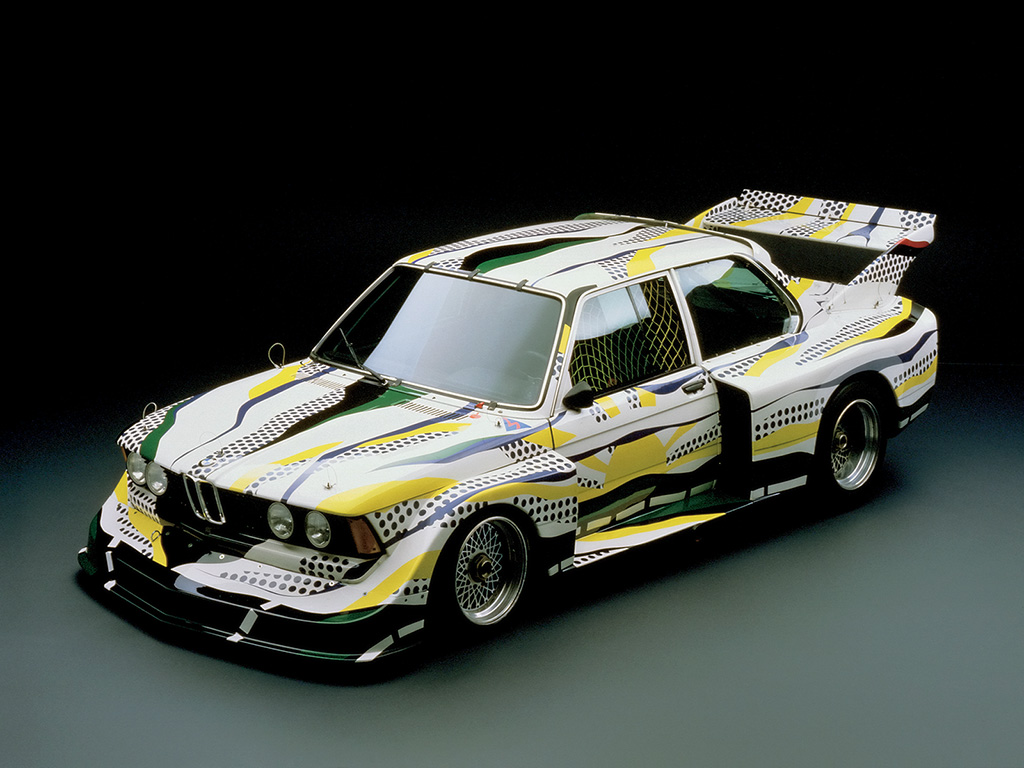
Racing–
After its completion, Roy Lichtenstein’s BMW Art Car celebrated not one, but two premieres: as a work of art at the Centre Pompidou in Paris, and as a racing car in the Le Mans 24-Hour Race and finished 9th. overall.
SPECS
- 4-cylinder inline engine
- Turbocharged
- 4 valves per cylinder
- Twin overhead camshafts
- Displacement: 2,000 cc
- Power output: 300 bhp
- Top speed: 257 km/h
Frank Stella, 3.0 CSL
The Artist
Born in 1936 in Malden, Massachusetts, Stella began studying art at the Phillips Academy in Andover at the tender age of 14. An exhibition of his work was held at the Museum of Modern Art as early on as 1959. During this creative period, the influence of the abstract Expressionists is unmistakable. The “post abstractionist,” mostly large-scale pop art paintings he produced in the 1960s, are now art history.
The Art–
The grid pattern — a feature of both Stella’s earlier and later creative periods — is often used by him as a kind of stage upon which a painted drama takes place. By way of contrast, the paintwork he created especially for the Le Mans race is not a stage, but the action itself. Cut-out lines all over the bodywork intensify the geometric look of the car. Explaining the thinking behind his high-speed work of art, Frank Stella, born in 1936 said, “My design is a kind of blueprint applied to the entire body of the car.” 3.0 CSL with its huge curved front bumper that extends outward and curved rear wing made for an exceptional art car. Frank Stella’s vision only enhanced the already good-looking car and transformed it into a masterpiece.
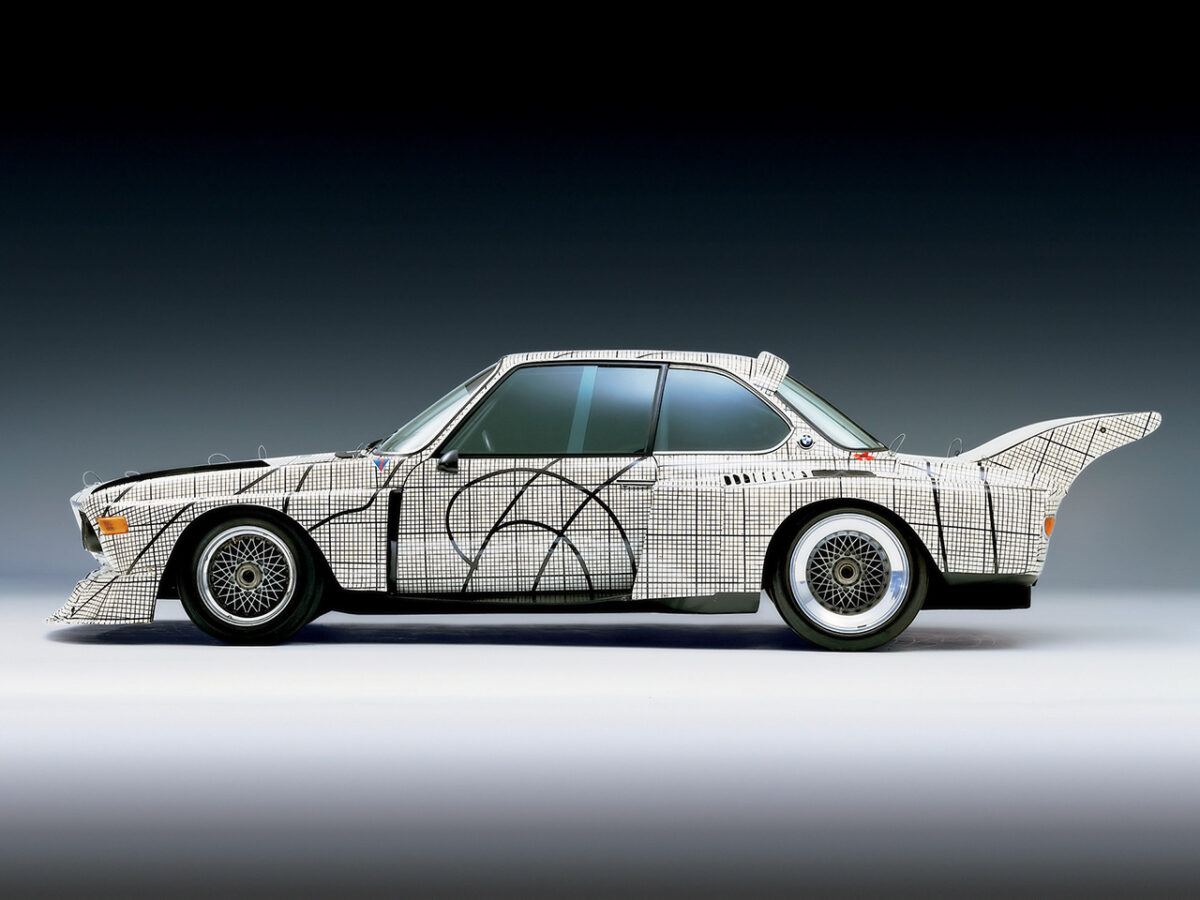
Racing–
Stella’s coupe took part in the 1976 24-hour race at Le Mans, but was not among the top finishers. After its debut, the car was entered for another race, this time for a Manufacturer’s World Championship event in Dijon, France. It was to be driven by Ronnie Peterson, a racing driver of international repute, and one of Stella’s friends. Peterson, however, was involved in a fatal accident during the Italian Grand Prix at Monza in 1978. In memory of his friend, Stella produced a series of paintings entitled “The Polar Co-ordinates for Ronnie Peterson.”
SPECS
- 6-cylinder inline engine
- Turbocharged
- 4 valves per cylinder
- Twin overhead camshafts
- Displacement: 3,210 cc
- Power output: 750 bhp
- Top speed: 341 km/h
Alexander Calder, 3.0 CSL
The Artist-
Born in 1898 in Philadelphia, Alexander Calder started out as an engineer. But then he was overcome by the hereditary urge to follow in the footsteps of his father and grandfather, both of whom were sculptors. At the age of 25, Calder attended courses held by the “Art Student League.”
His well-known works of abstract art entitled “Mobiles” were in the eyes of many the most innovative American sculptures of the 20th century. After staging a series of successful exhibitions in Europe and the USA, Calder moved to Saché in France in 1956. He died in New York in 1976.
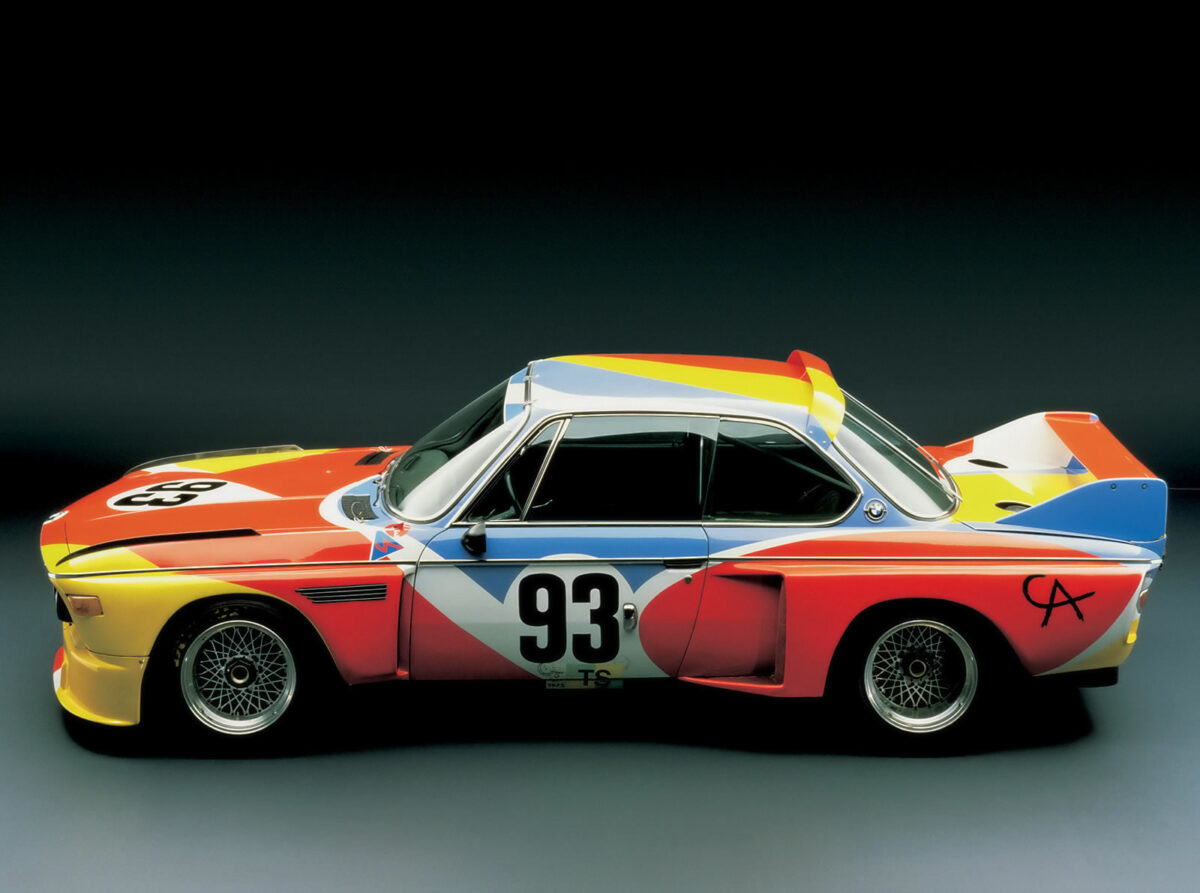
The Art–
He achieved this by breaking free of the formal restraints imposed by the automobile. In “defacing” the car, Calder did not orient his art to the streamlining of its body but subjected it instead to his own artistic style. As with his sculptures and mobiles, he returned to powerful colors and attractive curving expanses which he applied generously to the wings, hood, and roof. It is without a doubt one of the prettiest paint jobs ever done a car.
Racing–
The Art Car designed by Alexander Calder was driven in the 1975 Le Mans 24-Hour Race by the American Sam Posey and the Frenchmen Jean Guichet and Herve Poulain. This was the first and only occasion on which this automobile was to take part in the race.
Specs
- 6-cylinder inline engine
- 4 valves per cylinder
- Twin overhead camshafts
- Displacement: 3,210 cc
- Power output: 480 bhp
- Top speed: 291 km/h
Andy Warhol, M1 Group 4
The Artist-
The name Andy Warhol is nowadays almost synonymous with pop art. Born in Pittsburgh, Pennsylvania (USA) in 1928, he studied from 1945 to 1949 at the Carnegie Institute of Technology, and immediately after this started a career as a successful graphic artist in the advertising sector.
His “mass productions” of prominent faces became well known, as well as painted trivialities such as soup tins and Coca-Cola bottles. Warhol died in 1987 in New York. Two years after his death, the Museum of Modern Art dedicated a full retrospective exhibition to him.
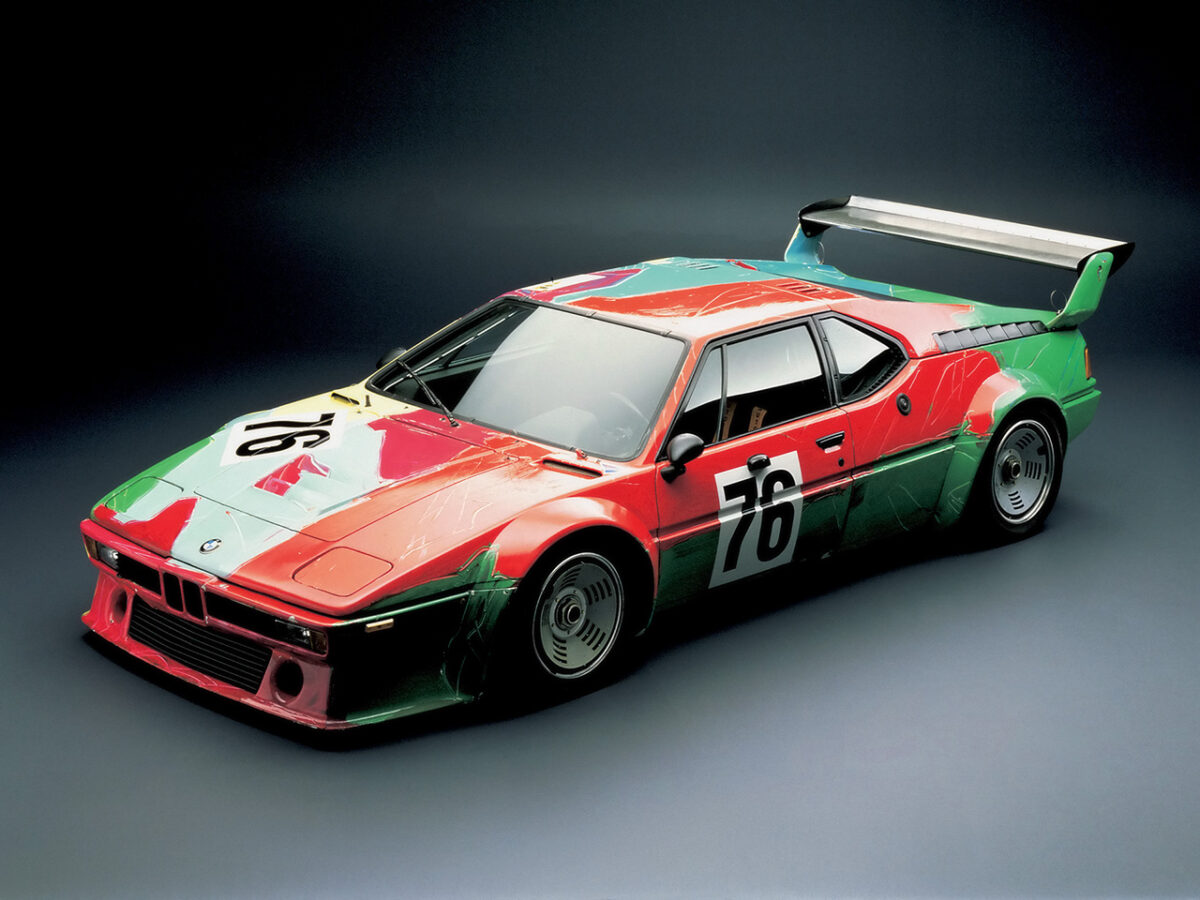
The Art-
Andy Warhol set about work in an equally unabashed manner after being commissioned to transform a BMW M1 into a BMW Art Car as he thought best. All the other artists who had previously decorated BMW racing cars had done so by painting a draft version on a scaled-down model; this was then transposed to the actual car by assistants under the artist’s supervision. Warhol, however, was the first to paint everything himself. By transferring his ideas to the car in this spontaneous and direct manner, he could clearly stamp his own character on it. It looks eye-catching and full of Vivid colors. It is supposedly valued at a whopping $60 Million.
Racing-The first and only time this rolling work of art took part in a race was at the Le Mans 24-Hour Race in 1979. It was driven by Manfred Winkelhock from the Federal Republic of Germany and the Frenchman Herve Poulain and Marcel Mignot. They finished sixth overall and second in their class.
Specs-
- 6-cylinder inline engine
- 4 valves per cylinder
- Twin overhead camshafts
- Displacement: 3,500 cc
- Power output: 470 bhp
- Top speed: 307 km/h
